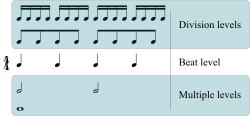- Metric levels: [1]EABACABADABACABA
- A staircase with each box double the size of the previous one:ABACABADABACABA [1]
- Binary-reflected Gray code (BRGC):to G
- Rotary encoder:to I
- 3-bit Gray code visualized as a traversal of vertices of a cube (0,1,3,2,6,7,5,4): [1]ABACABA
- Château de Chambord:ABACABA [6]

The ABACABA pattern is a recursive fractal pattern that shows up in many places in the real world (such as in geometry, art, music, poetry, number systems, literature and higher dimensions). [1] [2] [3] [4] Patterns often show a DABACABA type subset. AA, ABBA, and ABAABA type forms are also considered. [5]

























